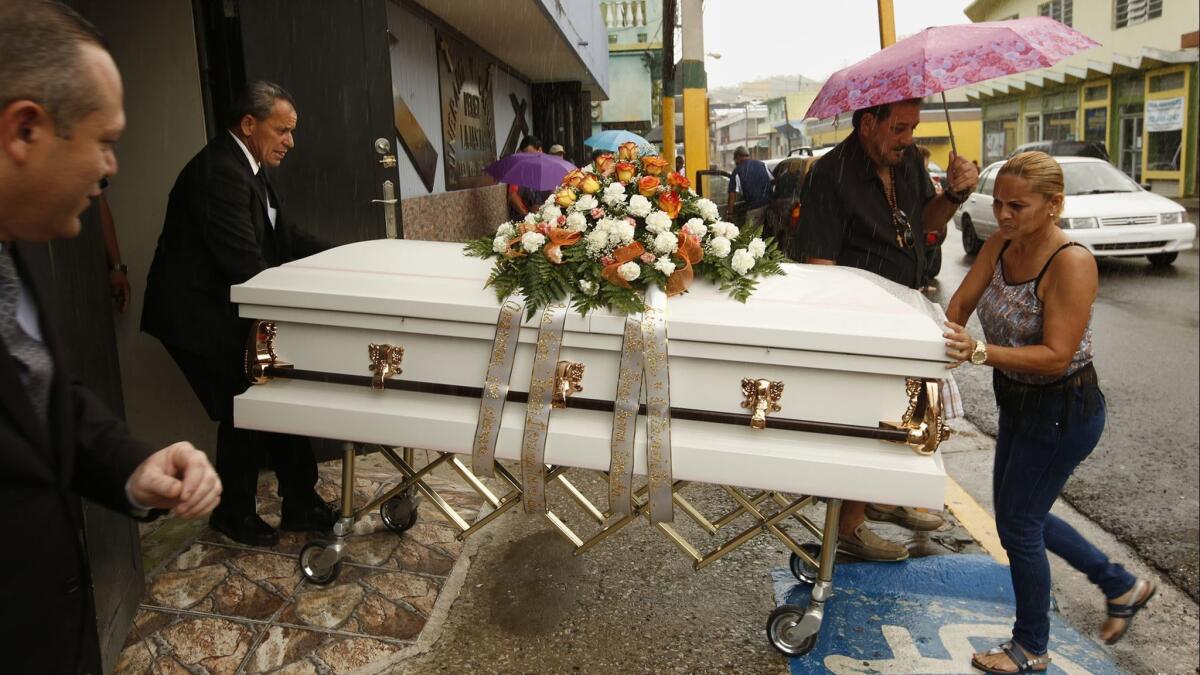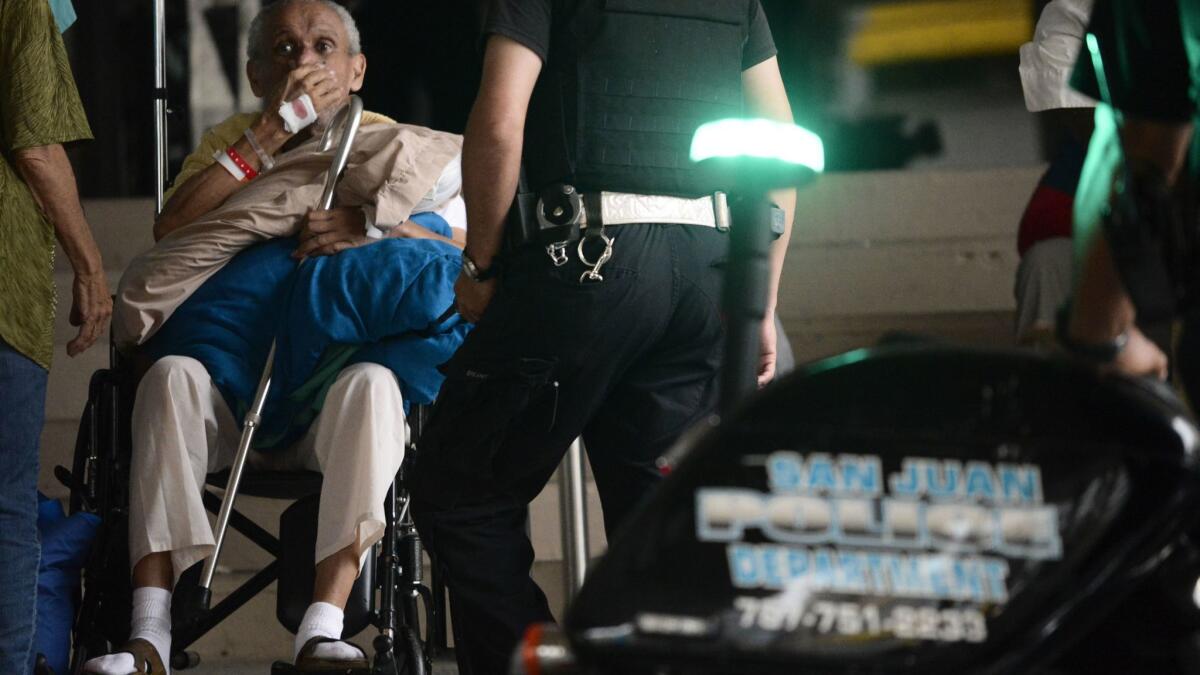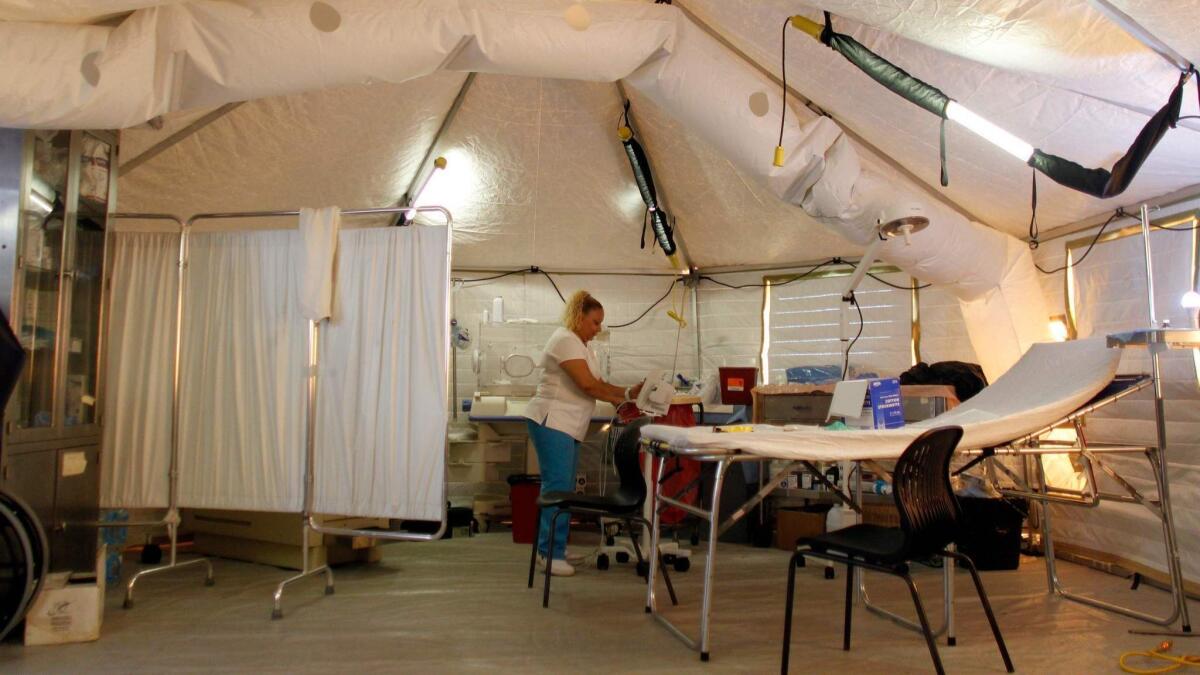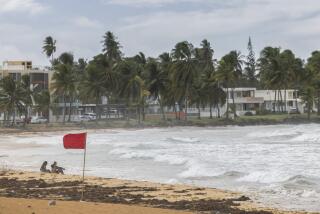Hurricane Mariaâs death toll was 70 times higher than Puerto Rican officials have reported, study says

Officials in Puerto Rico say that 64 people lost their lives after Hurricane Maria slammed into the island in September. A new report says that estimate is off â by about 4,600.
If the analysis is correct, it means that for every hurricane-related death thatâs currently on the books, another 70 fatalities in the U.S. territory have gone uncounted.
âOur results indicate that the official death count of 64 is a substantial underestimate of the true burden of mortality after Hurricane Maria,â researchers concluded in a study published Tuesday in the New England Journal of Medicine.
This isnât the first time people have questioned the official estimate of the number of deaths that ensued after the then-Category 4 hurricane made landfall on Puerto Rico on Sept. 20, 2017. The study authors noted that several âindependent investigationsâ have put the true number âin excess of 1,000.â
One of them was by Alexis Raul Santos, a demographer at Pennsylvania State University, and independent researcher Jeffrey Howard. In November, they concluded that Puerto Rico had experienced an excess of roughly 1,100 deaths in the wake of Hurricane Maria.
The new study adds to âthe growing consensus that the deaths have been undercounted,â Santos said.
And not a moment too soon, said Carmen Yulin Cruz, the mayor of Puerto Ricoâs capital city of San Juan.
âIt took too long to understand the need for an appropriate response was NOT about politics but about saving lives,â Cruz said on Twitter. âThese deaths and the negligence that contributed to them cannot be forgotten. This was, and continues to be, a violation of our human rights.â
With sustained winds of up to 155 mph and heavy rains that caused catastrophic flooding, there were many ways for Hurricane Maria to kill, explained the team led by Nishant Kishore of the Harvard T.H. Chan School of Public Health.
During the storm itself, residents might be hit by flying debris or swept away in flash floods. In the aftermath, deaths could be attributed to lingering safety problems, illnesses brought on by unsanitary conditions or the âloss of necessary medical services,â the authors wrote.

To get a better handle of Mariaâs true impact, interviewers fanned out across Puerto Rico between mid-January and late February. They knocked on doors and talked to adults from 3,299 households, which represented 9,522 people. Among other things, they asked whether anyone in the household died between the day the hurricane hit the island and the end of the year.
More than 93% of people invited to take the survey agreed to do so. They received no payment or other form of assistance from the researchers.
The researchers used these responses to calculate that between Sept. 20 and Dec. 31, there were about 14.3 deaths per 1,000 Puerto Ricans. Given the uncertainties inherent in their survey, the true mortality rate could have been as low as 9.8 deaths or as high as 18.9 deaths per 1,000 residents, they wrote.
According to Puerto Ricoâs Department of Health, the mortality rate for the same period in 2016 was 8.8 deaths per 1,000 people. That means there was at least 0.9 of an additional death per 1,000 people in 2017, and perhaps as many as 10 extra deaths per 1,000 people.
When the researchers extrapolated those mortality rates to the population of Puerto Rico, they calculated that the number of hurricane-related deaths was somewhere between 793 and 8,498. The midpoint of that range was 4,645.
The study authors recognized that they had no way of counting victims who had been living alone â with no remaining members of their households, the survey-takers would never learn of them. So the researchers adjusted their estimate, using the 2016 mortality rate for people living alone.
This time, they calculated that there were about 5,740 excess deaths after Hurricane Maria, though it could have been as low as 1,506 or as high as 9,889.
Among the deaths the researchers tallied through their survey, nearly 1 in 10 were a direct result of the storm, and one-third could be traced to âdelayed or prevented access to medical careâ as a result of the storm.
Indeed, 31% of households surveyed reported âdisruptions to medical servicesâ after the hurricane hit. About 14% of households were unable to get medications, 9% were stymied by closed medical facilities, 6% had doctors who were absent after the storm, and 10% lacked the electricity needed to power their respiratory equipment. In the most remote neighborhoods, about 9% of households had no way to call 911.

The survey-takers also found that after Maria hit, it took an average of 68 days for households to have their water service restored, 84 days for their electricity to return and 41 days for their wireless phone service to come back online.
Santos, who based his study on vital statistics records from the Puerto Rican government, said the new report goes further by assessing real-world conditions throughout the island.
âItâs really commendable that the researchers are providing as much detail as theyâre doing in their study,â he said. âThis should be the standard whenever people are publishing these kinds of studies.â
University of Puerto Rico at Mayaguez statisticians Roberto Rivera and Wolfgang Rolke used government data to estimate that 605 to 1,039 Puerto Ricans died in the six weeks after the hurricane.
Rivera said that the new studyâs figure of 4,645 excess deaths over 3½ months sounds âreally high,â but that thereâs no way to know for sure until the Department of Health releases updated death statistics.
At the same time, he added, the government is attempting to dismantle the Puerto Rico Institute of Statistics, an independent agency that collects and analyzes important data.
âItâs a bit of a contradiction because they are saying they want to be transparent, but this is one of the many things that theyâre doing that just doesnât add up,â Rivera said.
Identifying mistakes made in the wake of Hurricane Maria may help public health officials prepare for a future natural disaster, Kishore and his colleagues wrote. A proper and timely count of deaths should make it easier to get aid to survivors â and perhaps prevent secondary deaths owing to a lack of doctors, hospitals and medicines.
The report was published as Puerto Rico Gov. Ricardo Rossello hosted a conference on disaster prevention and management. On Tuesday, he pledged to improve the governmentâs response to future storms.
âHurricane Maria is the most devastating event in Americaâs modern history,â he tweeted. âWe reaffirm our commitment to maintain and improve the protocols and actions that best result in the safety ⦠of citizens.â
Carlos Mercader, executive director of the Puerto Rico Federal Affairs Administration, said government officials were not surprised by the new finding that more than 64 people had died as a result of Hurricane Maria.
âWe have always expected the number to be higher than what was previously reported,â Mercader said in a statement. Thatâs why the government has commissioned a report on the death toll that is being conducted by researchers from George Washington University.
âBoth studies will help us better prepare for future natural disasters and prevent lives from being lost,â Mercader said.
A spokeswoman from the university said the research team expects to announce its results this summer.
The 2018 Atlantic hurricane season begins Friday.
Twitter: @LATkarenkaplan
Twitter: @aminawrite
Times staff writer Noah Bierman in Washington contributed to this report.
MORE IN SCIENCE
By getting serious about limiting global warming, the world could save itself more than $20 trillion
Deep brain stimulation may offer treatment for type 2 diabetes, study suggests
This futuristic pill senses signs of disease inside the body, then sends a wireless alert to a phone
UPDATES:
5:25 p.m.: This story has been updated with additional information throughout.
This story was originally published at 7 a.m.






